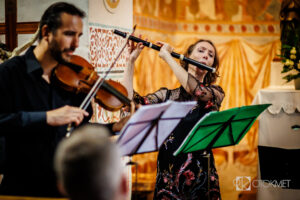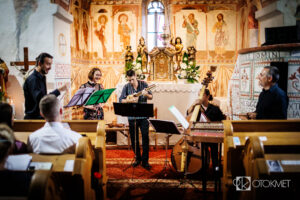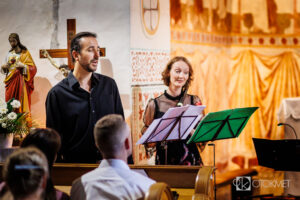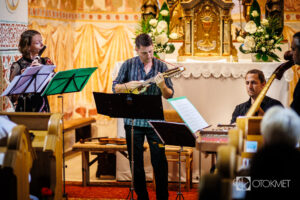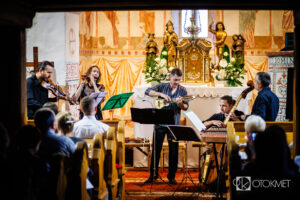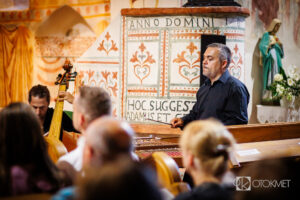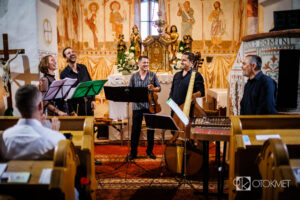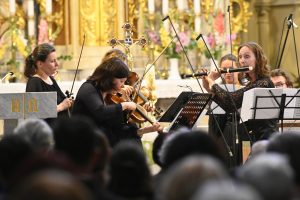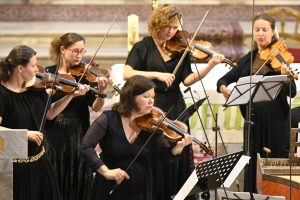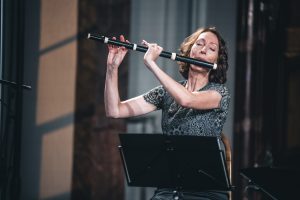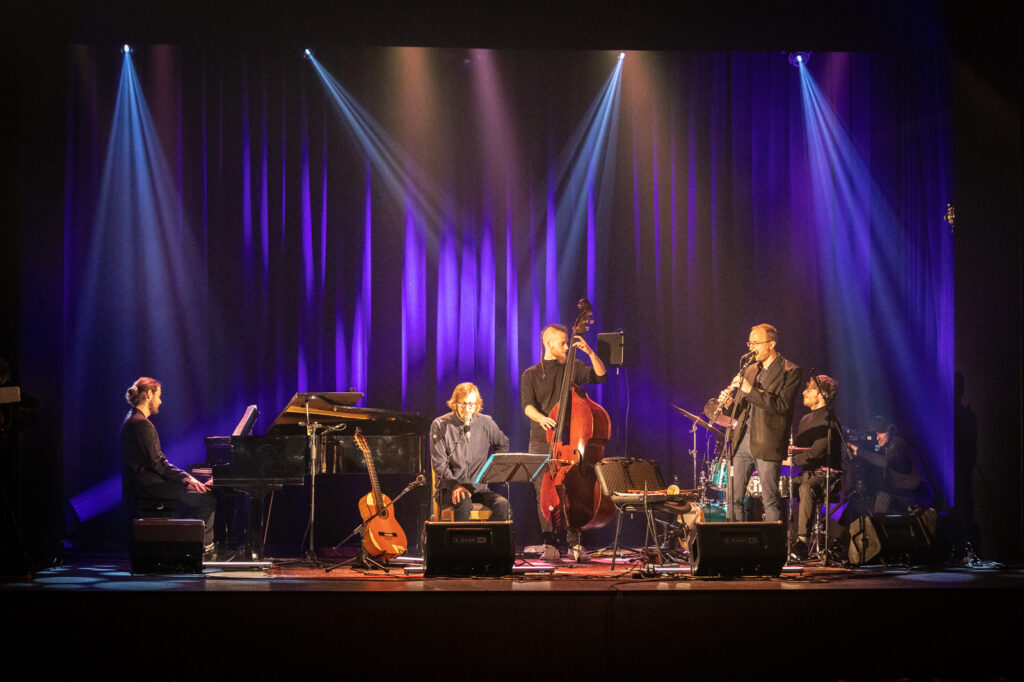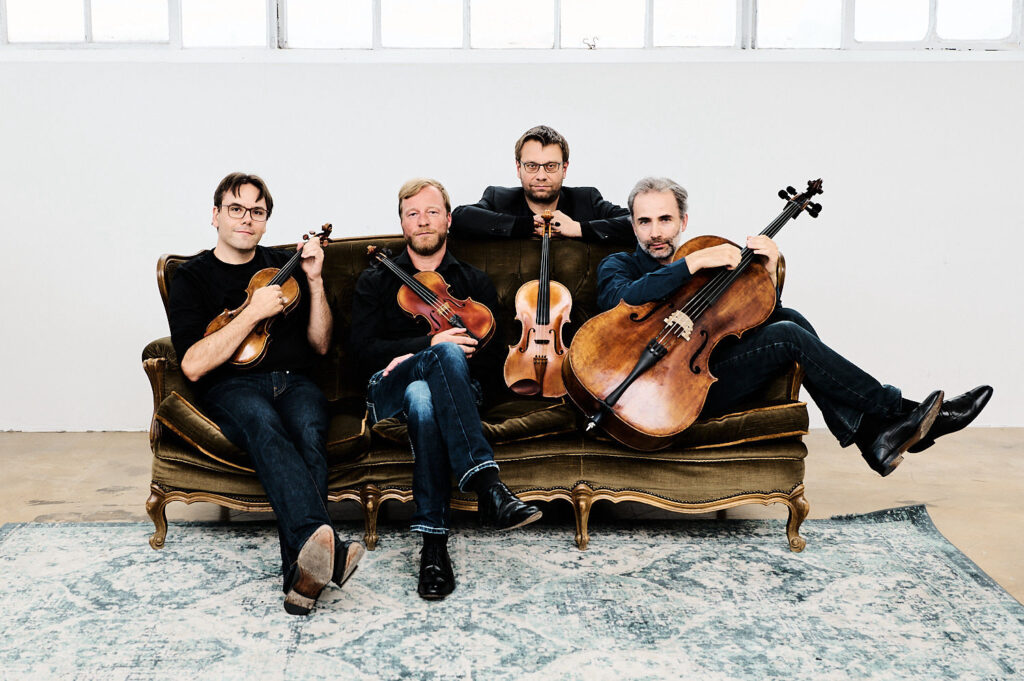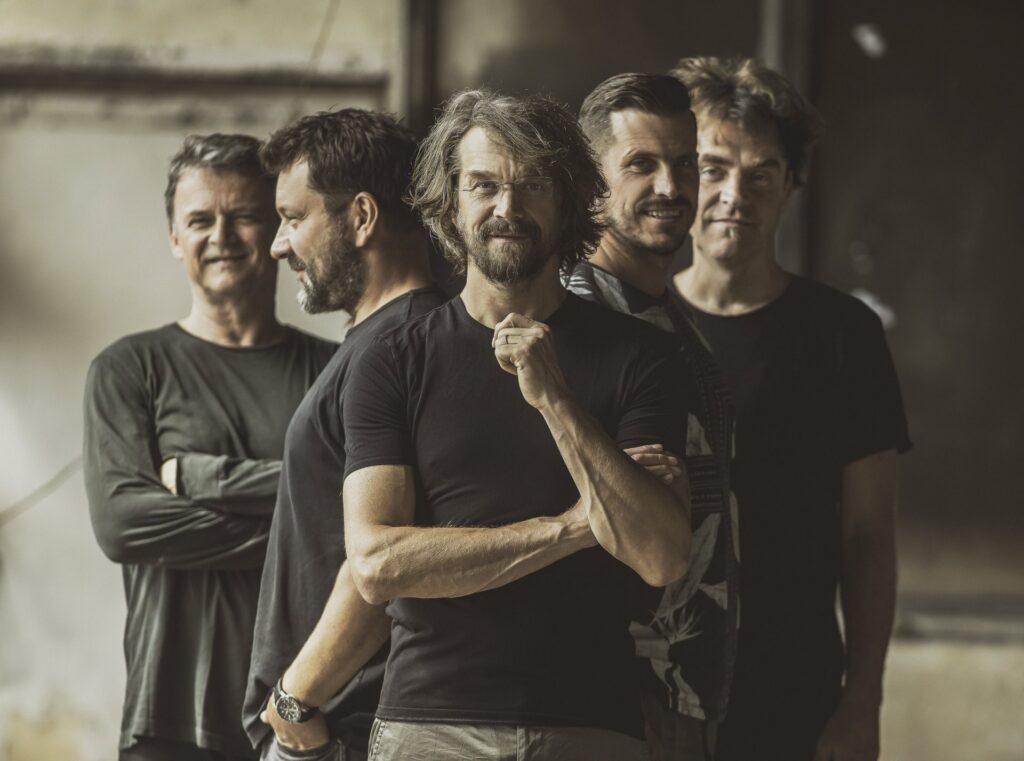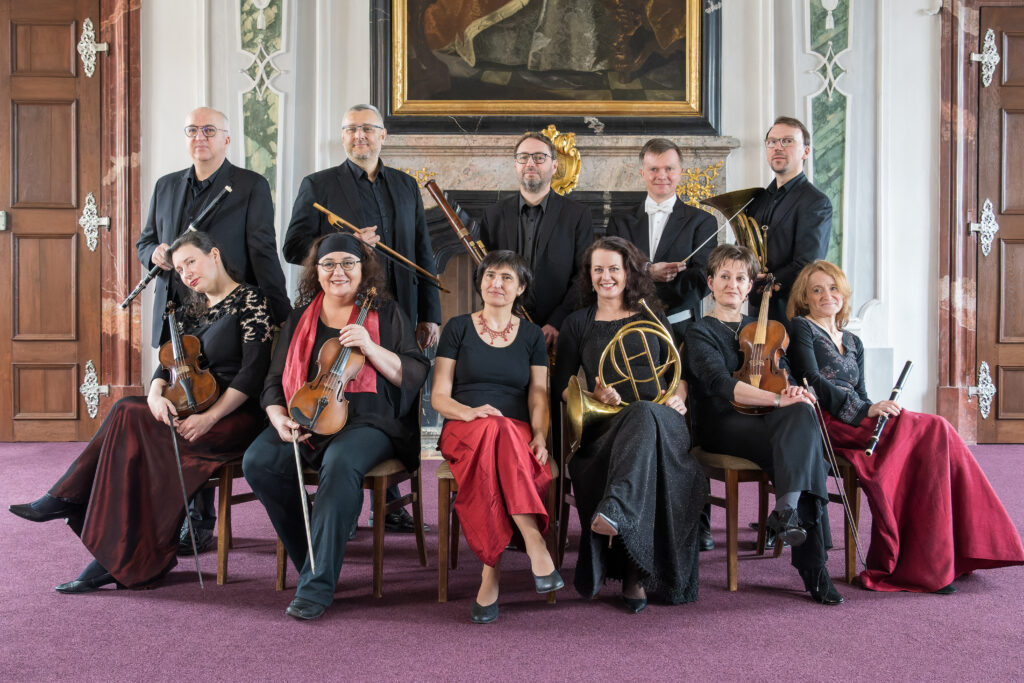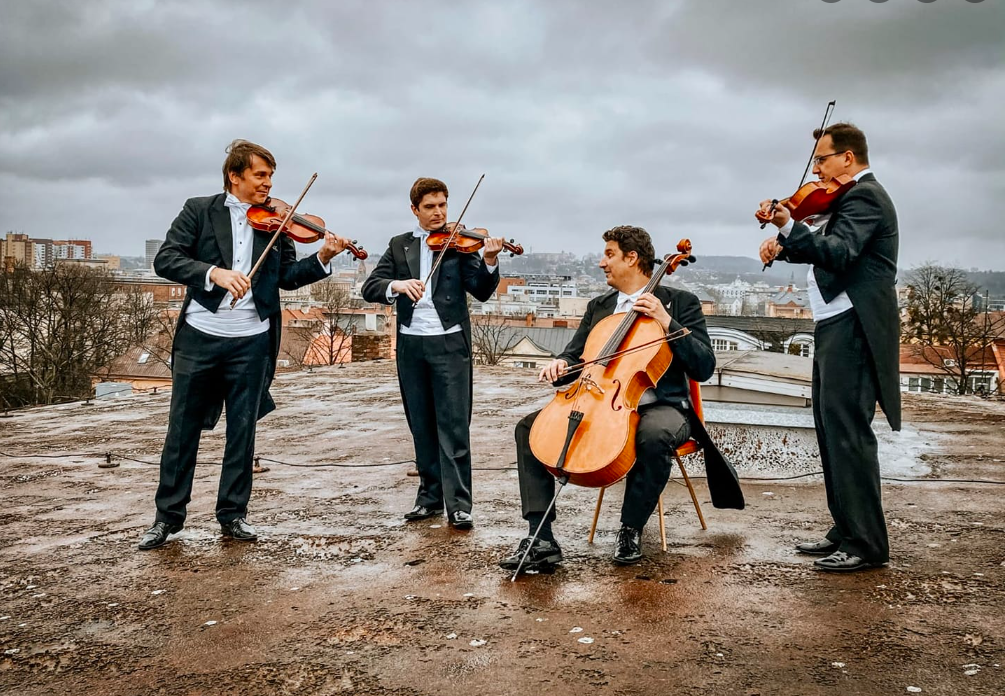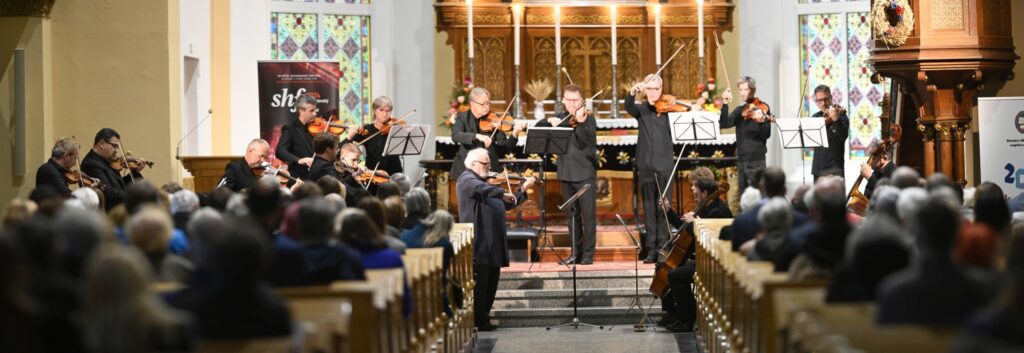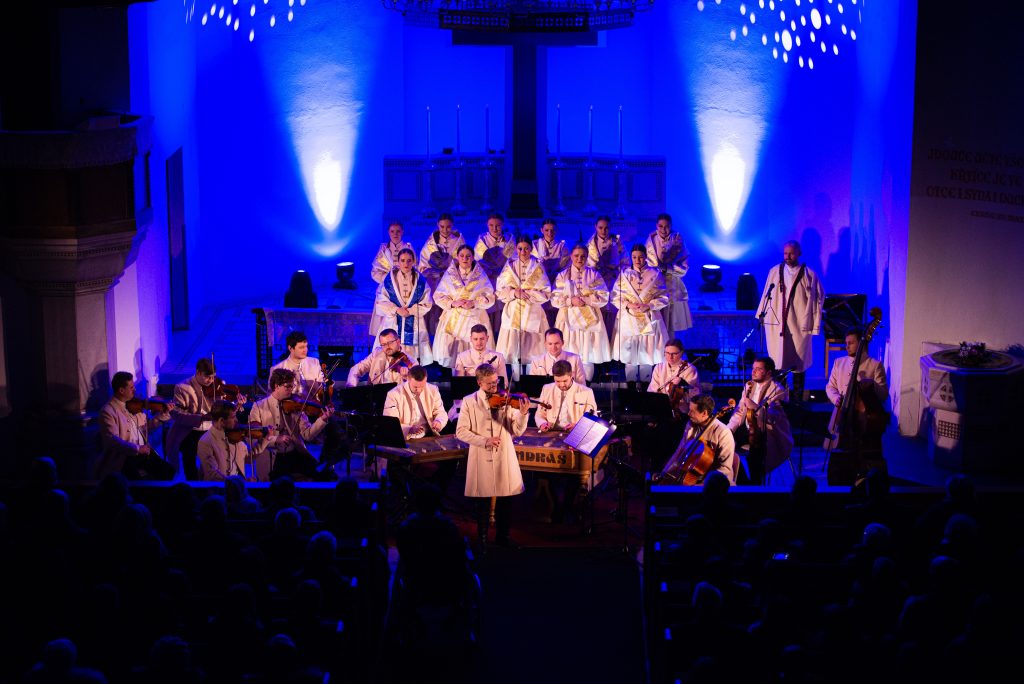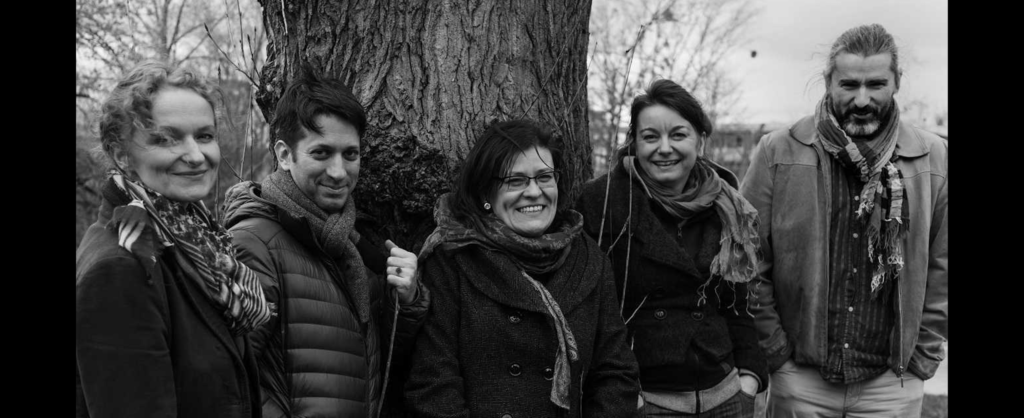COLLEGIUM MARIANUM: INDIAN BAROQUE SUMMER Telemann / Brentner / Zipoli / Schmid
Date
Friday 30. 5. 2025 from 6:00 pmTicket price
COLLEGIUM MARIANUM: INDIAN BAROQUE SUMMER Telemann / Brentner / Zipoli / Schmid
Programme
“Cachua Serranita” (On the way from Europe to South America and back.)
An unconventional combination of South American baroque and Czech and Moravian folk songs framed by the music of Telemann and Brentner, who drew inspiration from folk music.
Anonymous: Hanaq pachap cussicuinin (processional hymn to P. Maria, text by Juan Pérez de Bocanegra, Ritual formulario, 1631)
P. Kristián Gottfried Hirschmentzel (1638–1703): Moravica (Orpheus pro rusticis, 1698)
Bohemicus saltus (Orpheus pro civibus, 1698)
The doll walked sadly (Collection of Haná dances for clavichord, ca 1700)
Anonymous / Jan Antonín Lots from Losinthal? (ca. 1650–1721): Aria Hannaco
Georg Philipp Telemann (1681–1767): Hanaquoise (from Suite in D major, TWV 55:D3)
Jan Josef Ignác Brentner (1689–1742): Concerto da camera in D minor, Brk 92
Allegro staccato – Largo – Minuet
Anonymous / Domenico Zipoli? (1688–1726): Zuipaqui / Ad Mariam
Jan Josef Ignác Brentner: Bourrée & Capriccio (from Concerto in G minor, Brk 96, Horae pomeridianae op. 4/I, 1720)
A little dove flew out of the rock (Karel Jaromír Erben – Prostonóradní české písná a ríkadla, 1864)
Martin Schmid (1694–1772): Pastoreta Ychepe Flauta
Allegro – Adagio – Allegro
Taye jueves Santo: (Santa Cruz de la Sierra, 18th century)
Georg Philipp Telemann: Hanasky (from Suite in E major, TWV 55:E1)
Three Peruvian folk songs
On the Holy Hill (František Sušil – Moravian National Songs, 1860)
When I went to the Holy Hill (František Sušil – Moravian National Songs, 1860)
Anonymous: Cachua Serranita (Codex Martínez Compañón, Trujillo, Peru, ca 1782–1785)
When the Jesuits in the 17th and 18th centuries were preparing for a long missionary journey to South America, many added sheet music and musical instruments to their luggage. They knew that music touches the very heart of man and can be the first language of understanding. Thus, the South American jungle and mountains, together with the traditional music of the Bolivian and Peruvian Indians, also resounded in praise of God and the Virgin Mary, the works of J. Brentner, D. Zipoli and M. Schmid. The same music praising the Creator and the Mother of God was heard in Baroque temples and village churches in Moravia, in the very heart of Europe – here, of course, spiced up with local folklore. G. Ph. Telemann often let Hanáč and Silesian folk melodies be heard in his work and did not hide his enthusiasm for their “unadulterated barbaric beauty”. What music from the far corners of our world has in common is the passion and joy that only musicians know when they can play together… And receptive listeners who can be there.
Collegium Marianum:
Jana Semerádová – flauto traverso, recorders
Vojtěch Semerád – baroque violin and viola, vocals, percussion
Jiří Sycha – baroque violin, charango, vocals
Marcel Comendant – dulcimer, percussion (Slovakia)
Ján Prievozník – violon (Slovakia)



